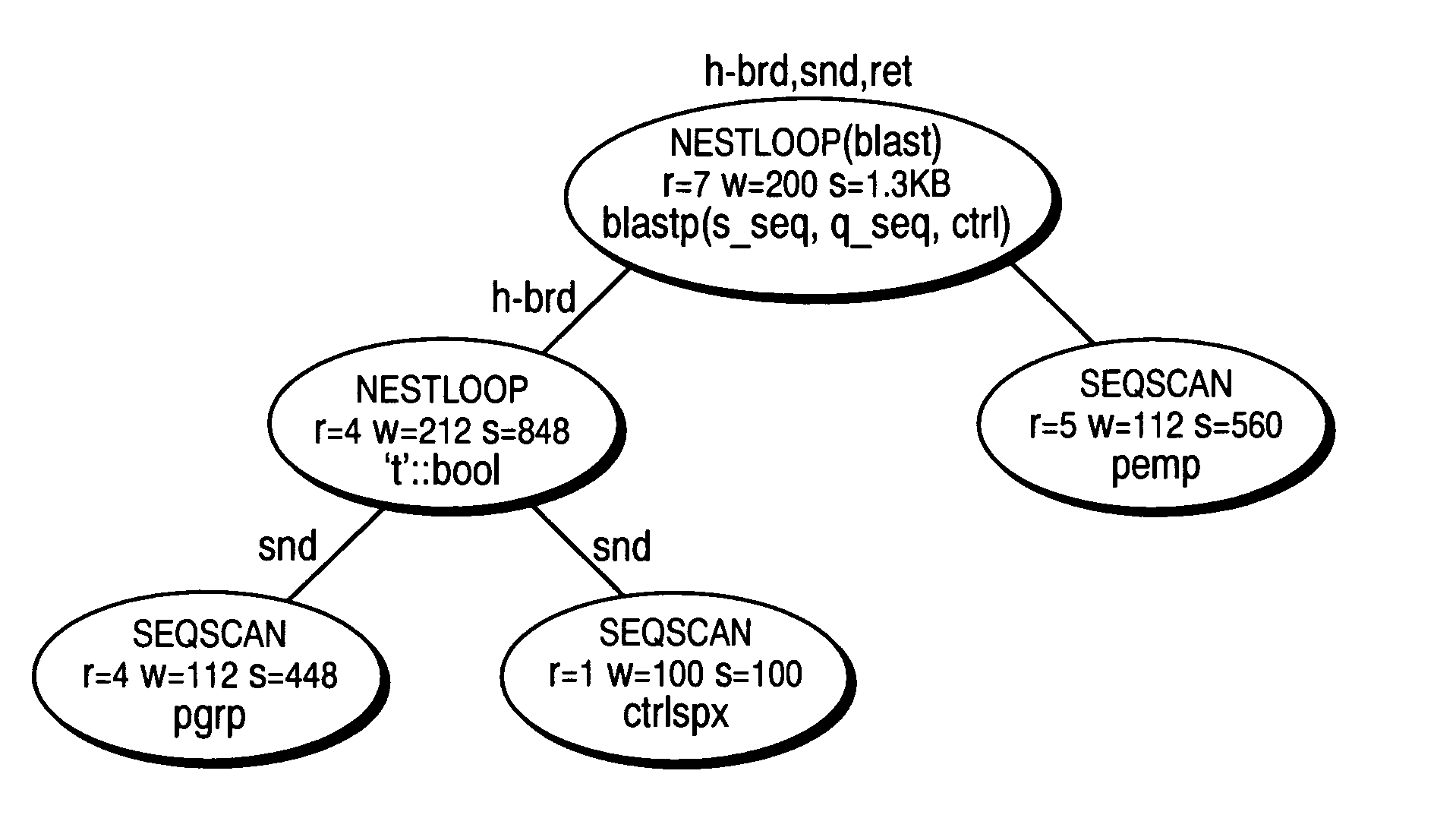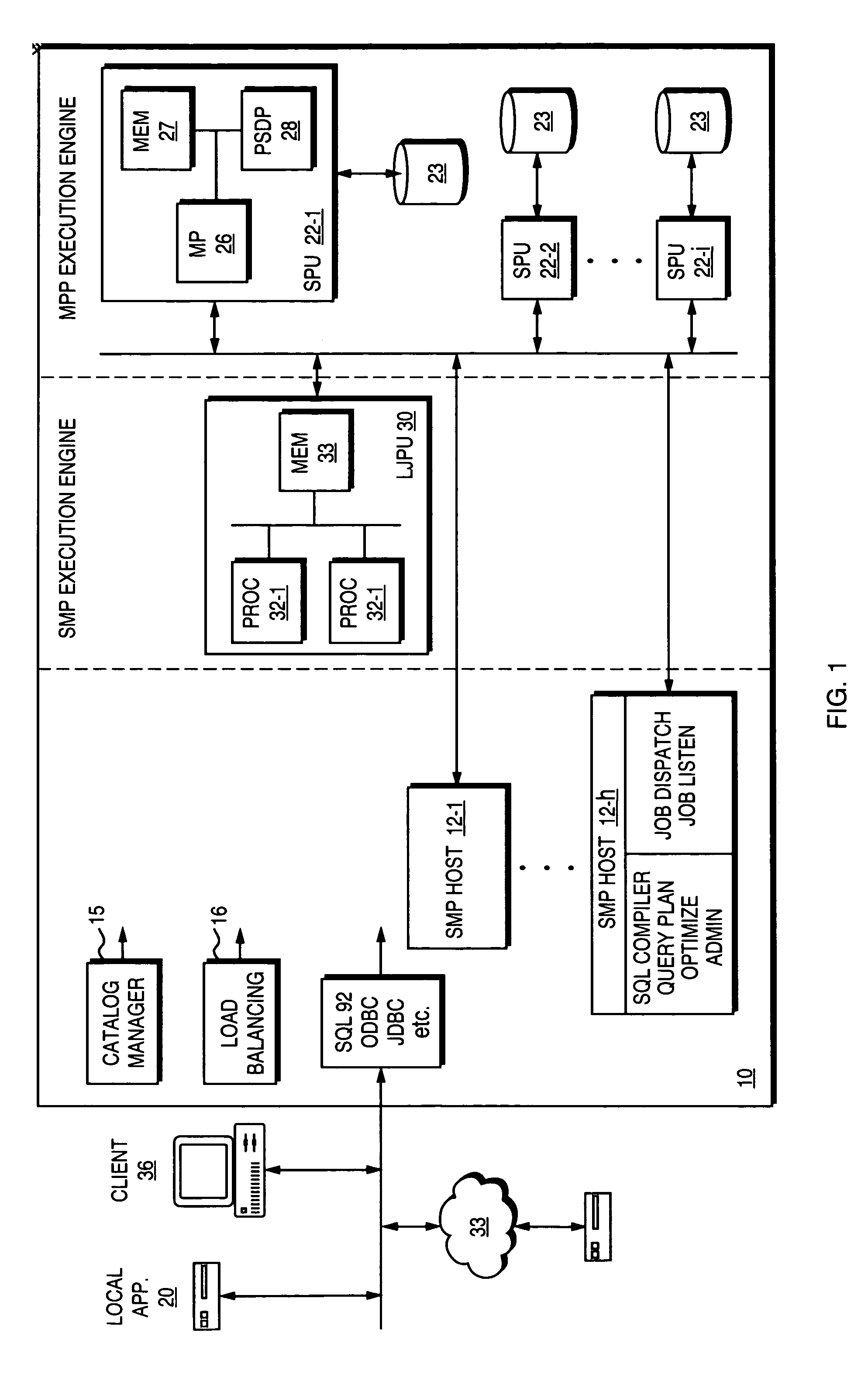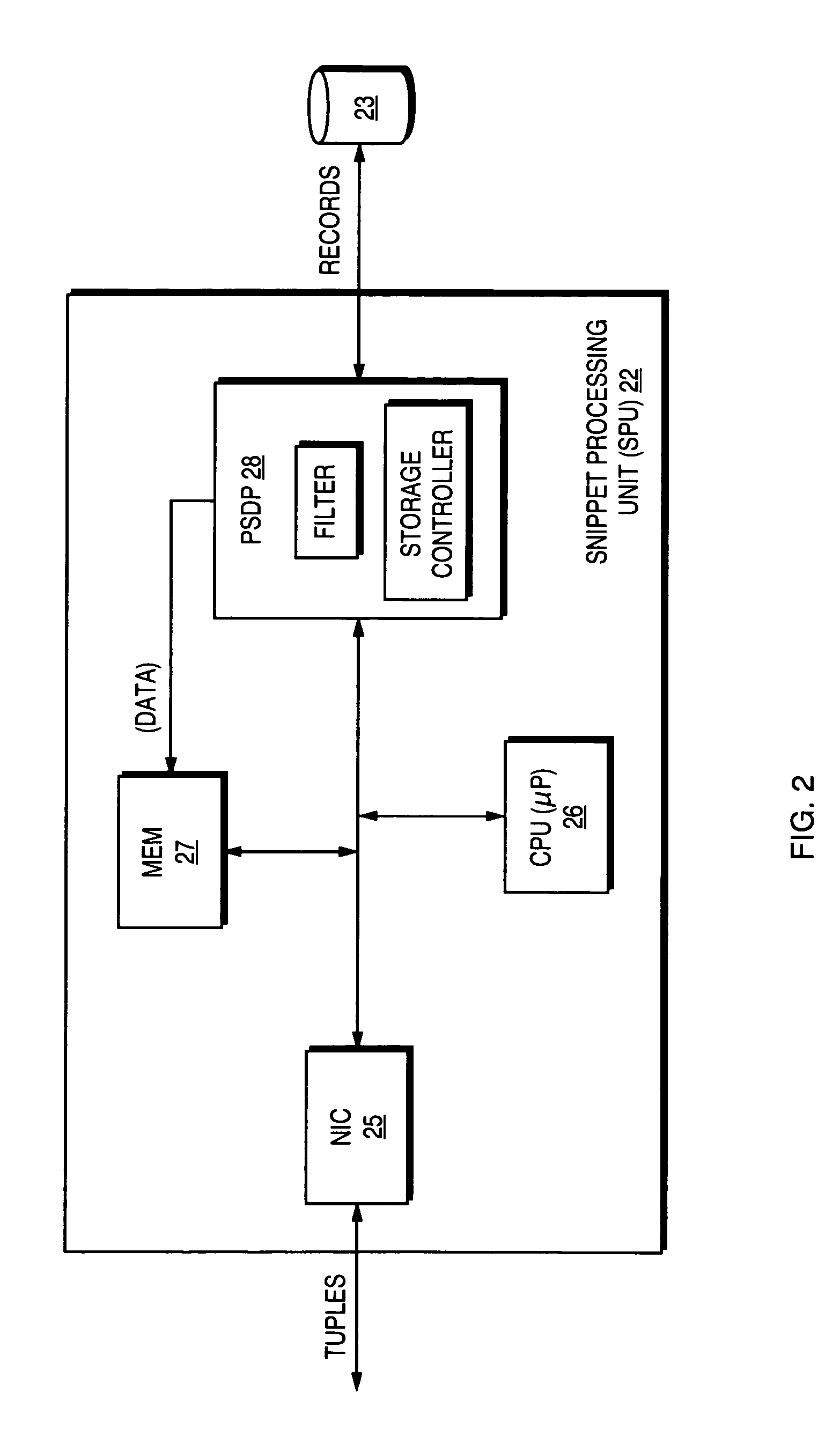Performing sequence analysis as a multipart plan storing intermediate results as a relation
a multi-part plan and sequence analysis technology, applied in the field of sequence analysis as a multi-part plan storing intermediate results as a relation, can solve the problems of high computational cost, large amount of processing resources for molecular sequence analysis, and high computational cost, and achieve the effect of speeding up sequence comparison processing, avoiding materialization of sequence data, and sharing processing load as efficiently
- Summary
- Abstract
- Description
- Claims
- Application Information
AI Technical Summary
Benefits of technology
Problems solved by technology
Method used
Image
Examples
Embodiment Construction
[0027] The invention's preferred implementation is on a parallel relational database system where embedded processors acting as intelligent disks communicate through a hierarchical communications fabric to one or more processors (called the ‘hosts’) at the root of the communications hierarchy.
[0028] Other than the host processors, each embedded processor (called ‘Snippet Processing Unit’ or ‘SPU’) consists of a magnetic disk drive, a communications fabric interface, a central processing unit (CPU), random access (RAM) memory and the circuitry required to connect these elements and provide electrical power.
[0029] An example parallel relational database system is described in a co-pending U.S. patent application Ser. No. 10 / 667,128 entitled “Asymmetric Data Streaming Architecture Having Autonomous and Asynchronous Job Processing Unit,” Attorney Docket No. 3336.1016-003 filed Sep. 18, 2003 and which is hereby incorporated by reference; although other system architectures may be used....
PUM
| Property | Measurement | Unit |
|---|---|---|
| execution time | aaaaa | aaaaa |
| physical basis | aaaaa | aaaaa |
| amino-acid | aaaaa | aaaaa |
Abstract
Description
Claims
Application Information
 Login to View More
Login to View More - R&D
- Intellectual Property
- Life Sciences
- Materials
- Tech Scout
- Unparalleled Data Quality
- Higher Quality Content
- 60% Fewer Hallucinations
Browse by: Latest US Patents, China's latest patents, Technical Efficacy Thesaurus, Application Domain, Technology Topic, Popular Technical Reports.
© 2025 PatSnap. All rights reserved.Legal|Privacy policy|Modern Slavery Act Transparency Statement|Sitemap|About US| Contact US: help@patsnap.com



